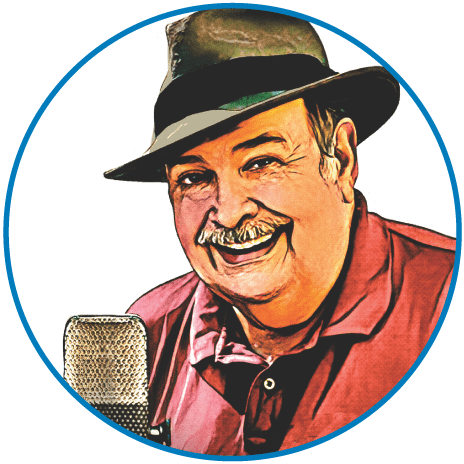[Writer’s Note: the piece below was the second attempt at a web log entry I made, September 2007, and the first one to get some attention and comments…largely due to its recommendation by Bob Souer on his Voiceover Boblog. When I had to switch web hosts early this year, the few posts I had (and all their comments) were wiped out. I managed to find backup copies of all but…you guessed it…one of the pieces people were still trying to link to. I even tried various phrase searches on Google, and putting out the word to anyone who might have copied it for posterity. Nada. It took the invervention of that same Bob Souer, who finally thought of looking for places it might have been “cached”…and bingo! Whether it was worth all the effort is not for me to say. But the whole experience does point up the obvious advantages of having as many friends as you can make in this…or any other endeavor. Thank you again, Bob.]
– original post follows –
As mentioned earlier, I’m in the confusing state of working in my (voice muffled here) decade of radio and related fields…yet still learning what seem to be the ever-evolving tricks of the trade.
One of the hardest things to wrap my tiny brain around lately is the concept of narrowing the focus of what you present to potential clients. In putting my latest voiceover demos together, there was the constant urge to cram as much variety into the commercial demo as I possibly could. After all, I should show someone my true range, right? Why run the risk of not being considered for a certain style just because my demo focused mostly on another, right?
Evidently, not many experts think so. And at first, my “experienced” self rebelled against that notion.
In the end, the only way I could make myself understand the concept (even if I’m still grappling with it), was when I remembered a story about a jazz musician told to me by my much-missed friend and mentor, Paul Montgomery.
Paul was known to thousands for over 20 years in Raleigh, NC as “Uncle Paul”, a kiddie show host persona he inherited as a staff announcer/performer on local tv in the 50s. But Paul was also a brilliant jazz player, and brought a lot of that sense of fun to the keyboards of a hammond organ or grand piano as part of his show. By the time I joined the cast the program was in its last few seasons and bounced around the schedule as news and talk shows came to dominate the morning. But he and I hit it off immediately. And it was invaluable training in how to ad-lib…in character…since we never had the luxury of (or budget for) things like scripts or rehearsal time for our daily half-hour shows. While I am not a musician, Paul said working with me and my puppets was like a good jazz gig. He said we could “read” each other like jazz players do…that if he threw out a line, he would never know what he’d get back but it would be something he could verbally play off of.
For many years…though not nearly enough…Paul taught me a lot about classical music and mainstream jazz. Our lunches and record buying trips were full of his stories about radio, early tv, studio hijinks, and especially jazz musicians. He could tell you the name of almost any player in a recording just by the sound of a solo. Some of his stories he got during phone calls from musician friends such as George Shearing. Others he picked up in conversations with performers as they stopped by during a tour, such as Clark Terry, George Duvivier, Marian McPartland, and Lionel Hampton.
I could write a short book about the years I was blessed to know Paul Montgomery, but I suppose I ought to save that for later and get back to the tie-in with my current learning curve in the voiceover biz. It became a little easier to understand when I remembered a story he told about a “young buck” who had just been hired by one of the great swing bands. During a performance, the new guy stood up for his solo and, though very skillful, was all over the place in his range and phrasing. When he finally sat down, a veteran player who’d been with the band for years leaned over and quietly said, “Hey, man…you don’t have to blow everything you know in one solo.”
Another story involved someone describing the great Count Basie, and his economy at the keyboard. “It ain’t that he don’t play a lot of notes,” the observer offered, “it’s just that the Count knows which notes not to play!”
And that’s the closest I’ve gotten so far to “getting it”.
Perhaps that helps you “get it” too. Maybe it doesn’t make any sense…and that’s okay, too. As a reward for slogging through the preceeding, I’ll leave you with one more story courtesy of “Uncle Paul”.
It seems many musicians like to step out for a little “refreshment” in the breaks between sets. In this story, one particular fellow returned to the bandstand so “refreshed” he could barely walk straight. The performance resumed with a tune in which he had a featured solo. The man got up, put his trumpet to his lips…but he had the horn turned around backward and was frantically trying to make music blowing into the bell instead of the mouthpiece. Oblivious to what was going on, he finally gave up, sat down and nudged the player beside him saying, “Take it, man…my lip’s gone!”
– Over and Out –


